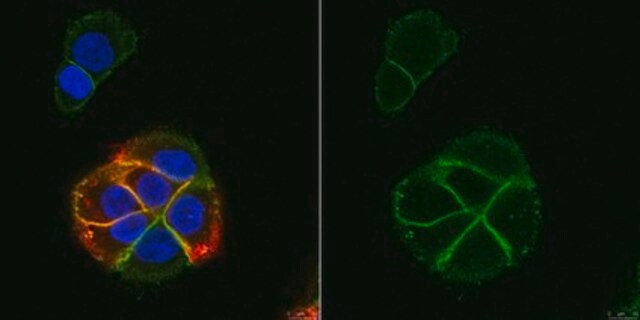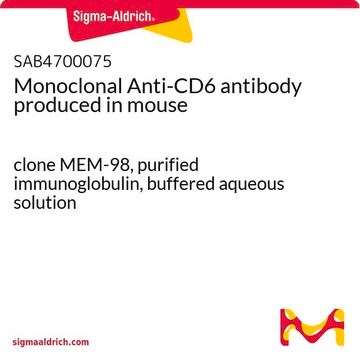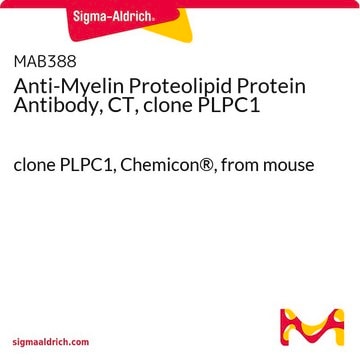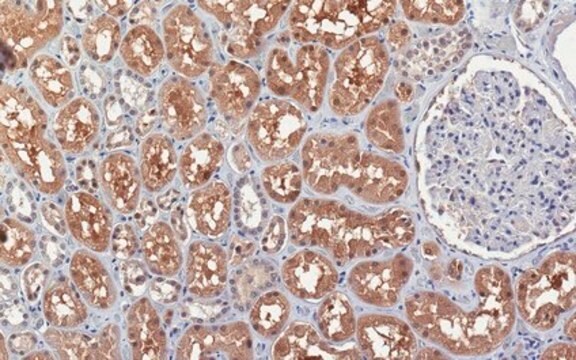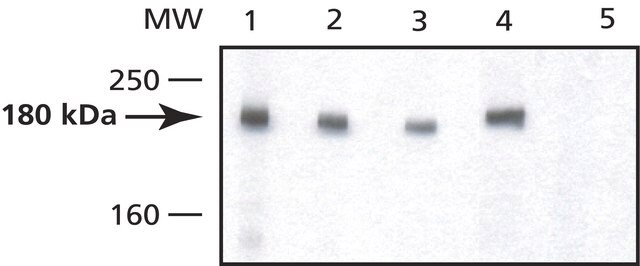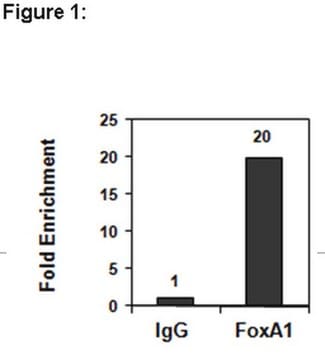MABF2105
Anti-CD6 Antibody, clone UMCD6
clone UMCD6, from mouse
Synonim(y):
T-cell differentiation antigen CD6, T12, TP120
About This Item
Polecane produkty
pochodzenie biologiczne
mouse
forma przeciwciała
purified immunoglobulin
rodzaj przeciwciała
primary antibodies
klon
UMCD6, monoclonal
reaktywność gatunkowa
human
opakowanie
antibody small pack of 25 μg
metody
dot blot: suitable
flow cytometry: suitable
immunoprecipitation (IP): suitable
inhibition assay: suitable
izotyp
IgG1κ
numer dostępu NCBI
numer dostępu UniProt
docelowa modyfikacja potranslacyjna
unmodified
informacje o genach
human ... CD6(923)
Powiązane kategorie
Opis ogólny
Specyficzność
Immunogen
Zastosowanie
Induces Function: A representative lot showed strong synergistic effect with phorbol ester in inducing T cell activation and enhanced the autologous mixed lymphocyte reaction. (Bott, C.M., et. al. (1993). Int Immunol. 5(7):783-92).
Dot Blot Analysis: A representative lot detected CD6 in Dot Blot applications (Bott, C.M., et. al. (1993). Int Immunol. 5(7):783-92).
Immunoprecipitation Analysis: A representative lot immunoprecipitated CD6 in Immunoprecipitation applications (Bott, C.M., et. al. (1993). Int Immunol. 5(7):783-92).
Flow Cytometry Analysis: A representative lot detected CD6 in Immunoprecipitation applications (Singer, N.G., et. al. (1996). Immunology. 88(4):537-43; Bott, C.M., et. al. (1993). Int Immunol. 5(7):783-92; Bott, C.M., et. al. (1994). J Immunol. 153(1):1-9; Li, Y., et. al. (2017). Proc Natl Acad Sci USA. 114(10):2687-2692).
Jakość
Flow Cytometry Analysis: A 1:1000 dilution of this antibody detected CD6 in one million Jurkat cells stimulated with PMA.
Opis wartości docelowych
Postać fizyczna
Inne uwagi
Not finding the right product?
Try our Narzędzie selektora produktów.
Certyfikaty analizy (CoA)
Poszukaj Certyfikaty analizy (CoA), wpisując numer partii/serii produktów. Numery serii i partii można znaleźć na etykiecie produktu po słowach „seria” lub „partia”.
Masz już ten produkt?
Dokumenty związane z niedawno zakupionymi produktami zostały zamieszczone w Bibliotece dokumentów.
Nasz zespół naukowców ma doświadczenie we wszystkich obszarach badań, w tym w naukach przyrodniczych, materiałoznawstwie, syntezie chemicznej, chromatografii, analityce i wielu innych dziedzinach.
Skontaktuj się z zespołem ds. pomocy technicznej